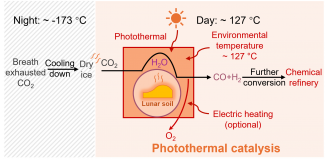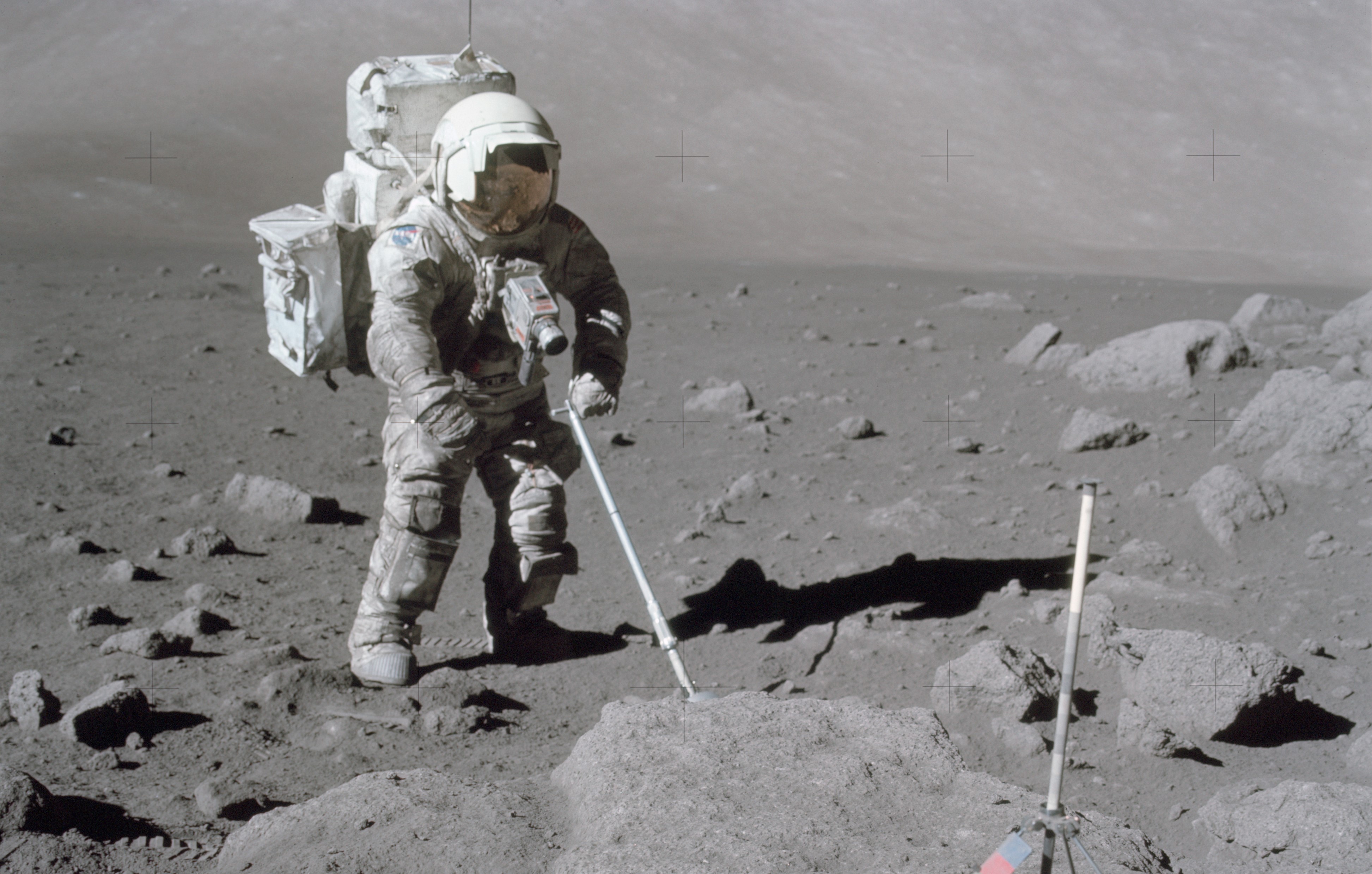Media release
From:
Lunar soil could support life on the Moon
Scientists have developed a technology that may help humans survive on the Moon. In a study publishing July 16 in the Cell Press journal Joule, researchers extracted water from lunar soil and used it to convert carbon dioxide into oxygen and chemicals for fuel—potentially opening new doors for future deep space exploration by mitigating the need to transport essential resources like water and fuel all the way from Earth.
“We never fully imagined the ‘magic’ that the lunar soil possessed,” said Lu Wang of the Chinese University of Hong Kong, Shenzhen. “The biggest surprise for us was the tangible success of this integrated approach. The one-step integration of lunar H2O extraction and photothermal CO2 catalysis could enhance energy utilization efficiency and decrease the cost and complexity of infrastructure development.”
Space agencies have floated the idea of using the Moon as an outpost for far-flung explorations of the cosmos for decades. However, the need to supply such a base with adequate resources to support its inhabitants—especially water—has been a barrier to making it a reality. A single gallon of water costs about $83,000 to ship by rocket, according to the study, with each astronaut drinking about four gallons per day.
Soil samples analyzed from the Chang’E-5 mission provide evidence of water on the lunar surface, which the authors suggest could allow human explorers to harness the Moon’s natural resources to meet their needs while avoiding the costs and logistical challenges of transporting those resources. However, previously developed strategies for extracting water from lunar soil involved multiple energy-intensive steps and didn’t break down CO2 for fuel and other essential uses.
To advance this research, Wang and colleagues developed a technology that would both extract water from lunar soil and directly use it to convert the CO2 exhaled by astronauts into carbon monoxide (CO) and hydrogen gas, which could then be used to make fuels and oxygen for the astronauts to breathe. The technology accomplishes this feat through a novel photothermal strategy, which converts light from the Sun into heat.
The scientists tested the technology using lunar soil samples gathered during the Chang’E mission as well as simulated lunar samples and a batch reactor filled with CO2 gas that used a light-concentrating system to drive the photothermal process. The team used ilmenite, a heavy black mineral and one of several reported water reservoirs in lunar soil, to measure photothermal activity and analyze the mechanisms of the process.
Despite the technology’s success in the lab, the extreme lunar environment still poses challenges that will complicate its usage on the Moon, according to the authors, including drastic temperature fluctuations, intense radiation, and low gravity. Additionally, lunar soil in its natural environment does not have a uniform composition, which leads to it having inconsistent properties, while CO2 from astronauts’ exhalations might not be enough to offer a basis for all the water, fuel, and oxygen they need. Technological limitations also continue to present a barrier, with current catalytic performance still insufficient to fully support human life in environments beyond Earth, said Wang.
“Overcoming these technical hurdles and significant associated costs in development, deployment, and operation will be crucial to realizing sustainable lunar water utilization and space exploration,” the authors write.
Multimedia






 International
International



